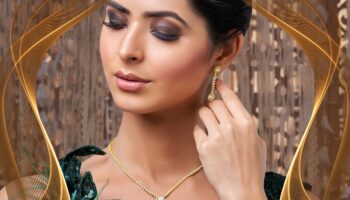The Cultural Significance of South Indian Wedding Sarees
A South Indian wedding saree is not just ceremonial clothing, it’s a family heritage inherited through the ages. In Tamil Nadu, Karnataka, Andhra Pradesh, and Kerala, a bride’s saree signifies not only her look, but her family tradition, faith, and regional heritage.
The bride’s trousseau is sometimes constructed around carefully selected bridal sarees South Indian in origin, particularly the beloved Kanjivaram saree for bride ceremonies. These sarees are valued for their rich texture, rich colors, and symbolic motifs which usually have deep cultural connotations, peacocks, temples, mango leaves, and divine deities.
In South Indian tradition, a wedding saree is usually selected several months ahead and kept as a lifetime heirloom, re-worn on anniversaries or special occasions. Of all the varieties, the Kanjivaram silk saree is the epitome of bridal refinement and cultural heritage.
The Legacy of Kanjivaram and Kanjeevaram Weaves
No matter you call it Kanjivaram, Kanjeevaram, or saree Kanchipuram silk, this revered weave saree is the epitome of South Indian bridal splendour. Hailing from the temple town of Kanchipuram in Tamil Nadu, the saree is famous for its durability, sheen, and unique zari work, many a time done with real silver threads coated with gold.
Made with pure mulberry silk and laboriously handwoven by experienced weavers, a conventional kanjivaram saree takes weeks to days to make. Every saree has contrast borders, elaborate pallu motifs, and elements inspired by architecture, epics, and nature.
What distinguishes Kanjivaram sarees for wedding ceremonies in particular is the balancing act of luxury and tradition that they provide. These sarees are not only attractive but also highly symbolic in their cultural reference points, making them the best South Indian wedding saree option.
Best Saree Picks for a South Indian Bride
Each bride would love a timeless yet intimate look. With an unending range of possibilities in bridal Kanjeevaram sarees, deciding what to pick can be a daunting task. Here’s how to limit the options.
Bridal Kanjeevaram Sarees in Rich Temple Designs
Temple borders and motifs are the characteristic of traditional bridal kanjeevaram sarees. Temple deities such as Lakshmi, Shiva-Parvati, or Ganesha are depicted in the pallu or border of these sarees through intricately woven zari.
Popular colors include:
- Deep red and gold (representing fertility and purity)
- Emerald green and silver (representing prosperity)
- Mustard yellow and royal blue (representing happiness and divine protection)
These temple kanjivaram sarees for the wedding ceremony are usually selected for the muhurtham (primary wedding ceremony) because they have spiritual significance and exquisite craftsmanship.
Modern Takes on the Classic Kanjivaram Saree for Bride
New-age brides are opting for reinterpreted versions of the kanjivaram saree for brides occasions. Imagine pastel shades, simple motifs, thread embroidery over bulky zari, and even fusion blouses that blend tradition with current trends.
Examples of contemporary bridal choices:
- Powder pink or ivory kanjivaram silk saree with subtle gold borders
- Off-shoulder blouses with traditional drapes
- Monotone weaves with matte finishes for subtle elegance
These designs preserve the authenticity of saree kanchipuram silk heritage but for brides who desire something a bit unusual but culturally aligned.
How to Style a Saree Kanchipuram Silk for a Regal Look
The saree kanchipuram silk for a wedding setting calls for careful matching and detailing.
Styling Tips:
- Blouse: Elaborately embroidered silk, velvet, or brocade blouses are best to go with the richness of the saree.
- Jewelry: Antique gold temple jewelry (kasumalai, jhumkis, maang tikka, vanki) is the classic choice.
- Hair: Classic braided hair with jasmine flowers or a kundan hairpiece does the trick.
- Drape: Opt for a formal pleat bound with a belt or kamarbandh to define the waistline, providing definition as well as majesty.
The key to getting your South wedding saree to look like a queen is finding the ideal balance between traditional elements and individual style.
Conclusion
For any South Indian bride, the saree is not merely a garment, it’s an icon of heritage, beauty, and a new beginning. With numerous choices, the Kanjivaram saree for wedding ceremonies is unique because it can encapsulate both tradition and individuality.
Whether you’re drawn to opulent temple-style weddings or minimalist, modernist renditions, kanjivaram saree for bride’s wedding remains the gold standard for bridal sophistication in South India. Select a weave that best represents you, your family traditions, and the pomp and circumstance of the event, because the appropriate south Indian wedding saree becomes part of your narrative, eternally.
Discover our handpicked selection of bridal Kanjeevaram sarees and discover the ideal South Indian wedding attire.
FAQs – South Indian Wedding Saree Guide
What makes Kanjivaram sarees ideal for South Indian weddings?
Their luxurious fabric, bright colors, ethnic motifs, and religious connotations make them the first choice as bridal attire.
How to choose the right bridal Kanjeevaram saree?
Make your decision based on ceremony timing, color affinity, and family traditions. Always check the quality of the silk and authenticity of the zari.
Are Kanjivaram silk sarees suitable for all wedding rituals?
Yes. From initiation to reception, various kanjivaram silk saree forms are donned on each prominent ritual.
What is the difference between Kanjivaram and Kanchipuram sarees?
They are one and the same; “Kanjivaram” and “Kanchipuram” are synonyms for sarees originating from Kanchipuram town.
How to accessorize a South Indian marriage saree?
Along with antique or temple jewelry, embroidered or contrasting blouses, traditional waist belts, and silk-threaded bangles.






